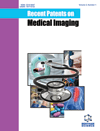-
oa Recent Advances in Image-Based Stem-Cell Labeling and Tracking, and Scaffold-Based Organ Development in Cardiovascular Disease
- Source: Recent Patents on Medical Imaging (Discontinued), Volume 4, Issue 2, Dec 2014, p. 110 - 126
-
- 01 Dec 2014
Abstract
Myocardial infarction (MI) and heart failure (HF) are leading causes of mortality and morbidity in the Western World. Therapeutic approaches using interventional cardiology and bioengineering techniques have thus far focused on either salvaging viable tissue post-infarction or preserving cardiac function in the failing myocardium. Regenerative medicine on the other hand, attempts to renew damaged tissue and enhance cardiac functional performance. Tremendous advances have been made in this field since the introduction and ethical approval for use of stem-cells (SC) and relevant technologies in pre-clinical and clinical practice. While study outcomes are still ambivalent on the potential translational impact of SCs, renewed hope has arisen since the introduction of induced pluripotent stem-cells (iPS) and the prospect of intact organ development and transplantation. The aim of this work is to review recent discoveries and the patent landscape employing stem-cell engineering, labeling and image-based monitoring strategies, their use in bioreactors and constructions of enriched bio-artificial membranes, as well as the potential role in artificial organ development and transplantation, with relevance to anticipated impact in pre-clinical screening and widespread clinical use.


